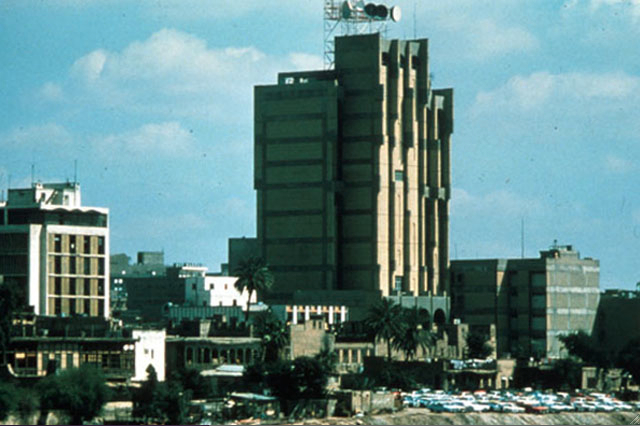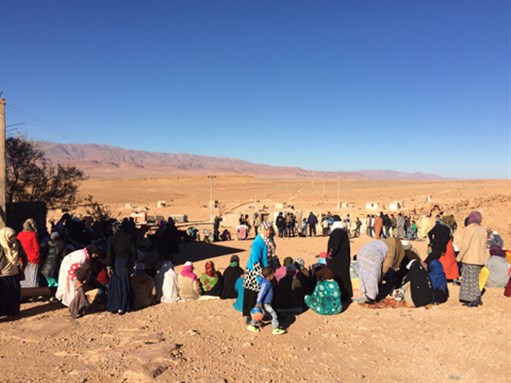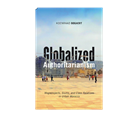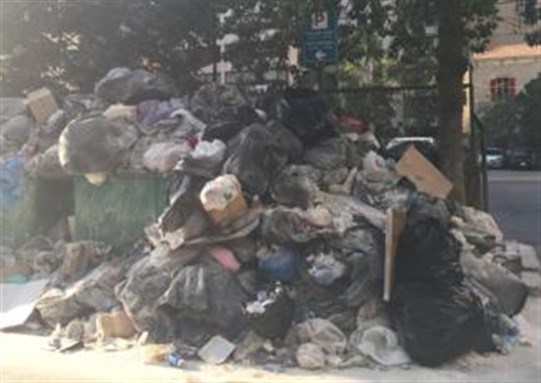All eyes are on Marrakesh where the 22nd Conference of the Parties on climate change takes place (COP22). The city has been cleaned up, Skype and Whatsapp are back online and the media pull out all the stops to put across a message of an environmentally friendly and politically moderate Morocco. COP22 has to become the next event contributing to the image of a Moroccan exception in the Arab region. But, if we scratch the surface of this façade and look away from the media circus in Marrakesh, we quickly find a reality of green grabbing, devastating mining pollution, and the violation of social rights, land expulsion in the name of “sustainable development,” and—ironically—increased plunder of non-renewable energy sources powered by green technology. In other words, a politics of “accumulation by dispossession” benefiting multinationals and powerful companies with close ties to the monarchy. These politics usually take place outside big Moroccan cities like Marrakesh and far away from media attention. These politics are also increasingly resisted. Already in 2004, sociologist and feminist Fatima Mernissi starts her book Les Sindbads marocains with a passionate plea to shed an enduring prejudice: if we want to understand what is really going on in contemporary Moroccan society, we shouldn’t be looking at its urban centers but rather at the peripheries, at villages in the High Atlas or the desert of Zagora and Figuig.
For those unacquainted with the Moroccan political context but eager to find out more, Imider, a small collection of seven villages three hundred kilometers south from Marrakesh might be good starting place (#300kmSouth). The people of Imider will receive you with open arms and heartwarming hospitality as I was privileged to experience recently. For more than five years now, residents of Imider occupy a water valve on Mount Albban. Confronted with economic marginalization, the dangerous pollution of their grazing lands, and a severe water shortage, the villagers collectively decided to hike up the mountain, and cut off the water supply to a nearby silvermine. They refused to leave ever since and continue to resist the mining company in what has become the longest sit-in in the modern history of Morocco. Since 20 August 2011, they established a permanent encampment on top of the hill to guard the valve and a water reservoir.
.jpg)
[Figure 1: Mount Albban. Image by author.]
The mine is exploited by the Société Métallurgique d`Imiter (SMI), a subsidiary of Managem, a mining company with the royal family as its main shareholder. Since 1969, SMI exploits one of Africa’s most productive silver mines. It was originally located on the communal lands of Amazigh peasants living in Imider. In 2004, the mining company opened a new well close to Mount Albban, which has caused the village water supplies to drop significantly, affecting not only their daily household consumption but also their agricultural livelihoods in this arid region of Morocco. According to a report by the Global Amazigh Congress, the mine consumed 1,555 cubic meters of water per day, which is twelve times the village`s daily consumption. The report also condemsn the draining of toxic wastewaster of the land of the people of Imider.
.jpg)
[Figure 2: The pipeline that used to provide SMI with water. Image by author.]

[Figure 3: The water valve turned off by the people of Imider. Image by author.]
In their resistance, the villagers built several small cabins on top of the hill where they come together, cook, and keep watch day and night. Over the years, they have organized many collective marches from the villages to mount Albban and gathered in great numbers on the hilltop to demonstrate their willingness to continue the struggle and to come together as a community. They have established a general assembly according to a traditional indigenous model of decision-making (the Agraw), where concerns and future strategies are discussed. All decisions are made by consensus. The struggle in Imider incorporates principles such as radical democracy, decentralized decision-making, and gender equality. Moreover, some of their most active members in the camp have managed to attract international media attention through their connections and activities on social media. They have expressed their solidarity with other similar struggles like Standing Rock, and the protesters open up their camp to whomever wants to show solidarity and exchange ideas. When I arrived at the camp there were activists from Algeria, Tunisia, Kenya and the Navajo Nation.

[Figure 4: Ground plan of the protest camp. Image by author.]
At first sight, especially given the specific timing of the protests in Imider, one might be inclined to believe that the sit-in on Mount Albban was a direct result or product of the region-wide uprisings, the so-called “Arab Spring,” and the rise of the 20 February Movement in Morocco. But, what if it was actually the other way around? What if the 20 February movement was actually a product of a broader historical process of social contestation in Morocco that has been developing for years, if not decades? And finally, what if the protests in Imider are actually the paradigmatic case here, pointing both to the continuity as well as the transformation of social protests in Morocco?
Visiting Imider is important for two reasons. First of all, the sit-in in Imider did not present some kind of new beginning but rather the continuation of a phenomenon that has been going on for a long time. The people of Imider call their struggle the “Movement On The Road 96,” referring to a sit-in in 1996 against the mining company that lasted for fourty-five days before it was violently dispersed by the police forces. Ever since, there have been continuous tensions and conflicts between the village and the company.

[Figure 5: One of the cabins with the logo of the “Movement on The Road 96.” Image by author.]

[Figure 6: Eco-feminist workshop at the protest camp. Image by author.]
But Imider also refers to a historical continuity on a wider scale. We have seen a consistent increase in socio-economic protest in Morocco over the past decade, especially in smaller towns and villages such as Beni Taydi (2001), Tamassint (2004), Al Hoceima (2005), Bouarfa (2006), Sefrou (2007), Sidi Ifni (2008), Beni Mellal (2009), Sidi Bouafif (2010), Gdeim Izik (2010), Khouribga (2011), and many others. A lot of these struggles fall under the radar, and tend to be overlooked because they are spontaneous, short-lived, and neglected by the mainstream media. This makes the growing “revolt of small towns” a difficult phenomenon to document. Yet, some of these “local” and “particularistic” struggles lasted for months, even years. Examples are the blockade of the local harbor in Sidi Ifni (2008), the boycott of the public water company in Bouarfa (2006-2009), the riots and strikes against the state-owned phosphate monopoly, Office Chérifien des Phosphates (OCP) in Khouribga (2011), and, of course, the occupation at Mount Albban.
The significant increase of these protests in the peripheries cannot be understood separately from the uneven relationship between town and country within the context of Morocco’s neoliberal political economy. Over the last three decades, Morocco is boosting the industrialization of coastal areas, speculative real estate development in large cities, investments in the country’s most famous tourist attractions, and, of course, the intensive exploitation of natural resources, while many smaller villages lack public infrastructure, and services, employment opportunities, and are often confronted with the side-effects of Morocco’s capitalist accumulation strategies (e.g. pollution). The contemporary social and ecological crisis in Morocco is thus not about poverty, pollution or marginalization as such, but about contemporary form of global capitalism, class politics, and relations of power and exploitation that produce poverty, inequality and environmental catastrophe.
A second reason why it is important to visit Imider has to do with the new form of social protest it represents. After the repression and “pacification” of the massive urban riots of the 1980s, the struggle shifted to other forms of social mobilization, other forms of contestation and other geographical locations. Since the early 1990s, Morocco has witnessed an explosion of local and grassroots associations spread around the country. The new space—and limits—created by the so-called alternance process, Morocco’s political reform process initiated in the 1990s, allowed new actors (human rights movements, neighborhood associations, women’s movements, unemployed graduates, etc.) to mobilize outside party-politics, and militant trade-unionism.
.jpg)
[Figure 7: The Agraw of 9 November 2016 just ended. Image by author.]

[Figure 8: Film-night at the protest camp. Activists show, amongst others, a video with a message to COP22
they made with the people of Imider, which can be accesed here. On the right, we can discern the picture of one
of the first political prisoners of Imider (Mustafa Ouchtoubane), who spent more than three years in prison.
In total, thirty people were arrested. Still three of them are in jail. Image by author.]
At the same time, Imider created its own space for different kinds of struggles to intersect: a struggle for social rights, indigenous rights, and environmental rights. What’s more, the people of Imider specifically emphasize that these different struggles are inseparable within the context of contemporary global capitalism, and authoritarian politics. They are a model, just like the struggle at Standing Rock, for the direction of social struggle today. As they stated in one of their pamphlets:
“To talk about sustainable development is no longer enough, it’s a word worn out and abused: from the great multinational-companies to the small factories, it’s used as an alibi. Today it’s necessary to point out that the limits of the so-called sustainability, in fact, can’t be imposed by external criteria to the social, cultural and environmental context in which this sustainability must, at the local level, be realized. Today [it] is necessary to create a direct and continual communication between the resources of the territory and the demands, at every level, of its inhabitants. (…) Our protest action strongly affirms that this is the direction we want to follow. (…), in our vision there is the space for the care and protection of those fundamental common goods like water, land, culture and local economies, basic rights: commons that must be accessible and shared in an equal way by everyone, because they are the basis of (…) life itself and of its continuity (…).”
On my way back from the camp in Albban, I was listening to a talk show about the COP22, and the problem of climate change on the Moroccan radio. There was a broad consensus among the interviewer and the interviewees that main problem with regard to Morocco was the lack of education and awareness among ordinary people. The solution lied in teaching them to be “responsible” citizens. Not a word on the environmental and social violations of large mining companies, nothing about the daily politics of dispossession by large corporations. It was repugnant after what I witnessed at mount Allban.
The people of Imider, in contrast, taught me that they know best how to preserve their land and the environment, how sustainable development does not only include climate change, but also climate justice. They know very well that climate justice is about much more than just individual behavior. They are fighting for it every day, and they are an example for the rest of us.


















